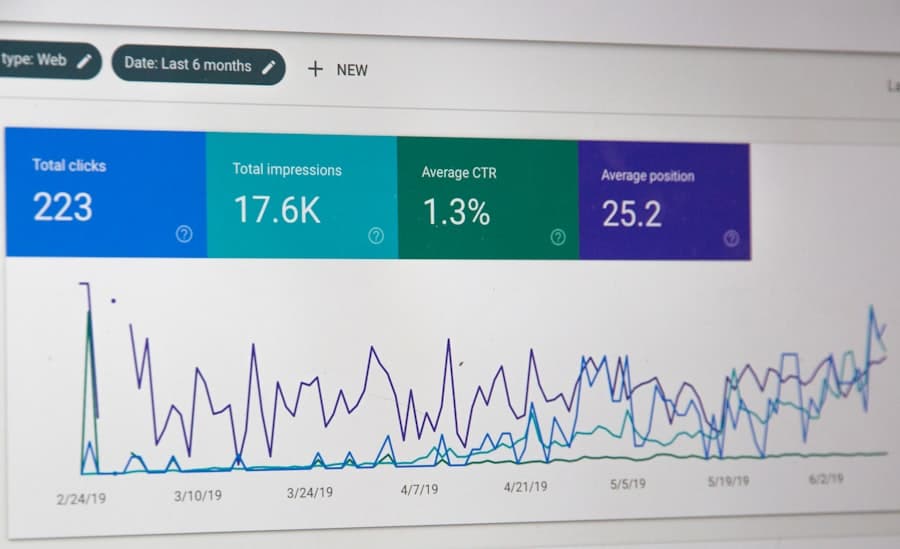The intersection of education technology (EdTech) and big data has transformed the landscape of learning and teaching in profound ways. EdTech encompasses a wide range of digital tools and platforms designed to enhance educational experiences, from online learning management systems to interactive applications that engage students in new ways. Big data, on the other hand, refers to the vast amounts of information generated daily, which can be analyzed to reveal patterns, trends, and insights.
When these two domains converge, they create opportunities for more effective teaching strategies, improved student outcomes, and a deeper understanding of the educational process. As educational institutions increasingly adopt technology, the volume of data generated from various sources—such as student interactions with learning platforms, assessment results, and demographic information—grows exponentially. This data can be harnessed to inform decision-making at all levels, from classroom instruction to institutional policy.
The potential for big data in education is immense; it allows educators to tailor their approaches based on real-time feedback and analytics, ultimately fostering a more responsive and effective learning environment. The integration of big data into EdTech not only enhances the educational experience but also equips educators with the tools necessary to address the diverse needs of their students.
Key Takeaways
- EdTech and Big Data are revolutionizing the education sector by providing valuable insights and personalized learning experiences.
- Big Data plays a crucial role in education by analyzing student performance, identifying trends, and predicting outcomes.
- Personalized learning and adaptive technology use Big Data to tailor educational content and experiences to individual student needs and learning styles.
- Predictive analytics leverage Big Data to forecast student success and intervene early to prevent academic challenges.
- Data-driven curriculum development uses Big Data to create and modify educational programs based on student performance and needs.
The Role of Big Data in Education
Big data plays a pivotal role in reshaping educational practices by providing insights that were previously unattainable. One of the most significant contributions of big data is its ability to track student performance over time. By analyzing data from assessments, attendance records, and engagement metrics, educators can identify trends that may indicate areas where students are struggling or excelling.
For instance, if a particular cohort consistently underperforms in mathematics, educators can delve into the data to uncover specific concepts that are challenging for students, allowing for targeted interventions. Moreover, big data facilitates the identification of at-risk students who may require additional support. By employing predictive analytics, schools can analyze historical data to forecast which students are likely to face challenges in their academic journey.
This proactive approach enables educators to implement early intervention strategies, such as personalized tutoring or mentoring programs, before students fall too far behind. The ability to leverage big data in this manner not only enhances individual student outcomes but also contributes to overall institutional effectiveness by reducing dropout rates and improving graduation rates.
Personalized Learning and Adaptive Technology

Personalized learning is one of the most compelling applications of big data in education. This approach tailors educational experiences to meet the unique needs of each student, recognizing that learners have different strengths, weaknesses, and preferences. Adaptive technology plays a crucial role in this process by utilizing algorithms that analyze student performance in real-time.
For example, platforms like DreamBox Learning and Khan Academy adjust the difficulty of exercises based on a student’s responses, ensuring that they are neither overwhelmed nor under-challenged. The use of big data in personalized learning extends beyond mere content delivery; it also encompasses the development of individualized learning paths. By analyzing a student’s interaction with various resources—such as videos, quizzes, and interactive simulations—educators can create customized learning experiences that align with each student’s pace and style.
This level of personalization not only enhances engagement but also fosters a sense of ownership over one’s learning journey. As students progress through tailored curricula, they are more likely to develop intrinsic motivation and a deeper understanding of the material.
Predictive Analytics for Student Success
Predictive analytics has emerged as a powerful tool in education, enabling institutions to anticipate student needs and outcomes based on historical data patterns. By employing sophisticated algorithms and machine learning techniques, educators can analyze vast datasets to identify factors that contribute to student success or failure. For instance, researchers have found correlations between attendance rates, participation in extracurricular activities, and academic performance.
By understanding these relationships, schools can implement strategies that promote positive behaviors and enhance student engagement. One practical application of predictive analytics is in course enrollment management. By analyzing past enrollment trends and student performance data, institutions can forecast demand for specific courses or programs.
This information allows schools to allocate resources more effectively, ensuring that they offer the right courses at the right times to meet student needs. Additionally, predictive analytics can inform retention strategies by identifying students who may be at risk of dropping out. By intervening early with targeted support services—such as counseling or academic advising—schools can improve retention rates and foster a more supportive educational environment.
Data-Driven Curriculum Development
The integration of big data into curriculum development represents a significant shift in how educational content is created and delivered. Traditionally, curriculum design relied heavily on expert opinions and standardized testing outcomes; however, with the advent of big data analytics, educators can now base their decisions on empirical evidence derived from student performance metrics. This data-driven approach allows for continuous improvement of curricula by identifying which instructional methods and materials yield the best results.
If certain groups consistently perform better with specific instructional techniques or resources, curriculum developers can adapt their offerings accordingly. Furthermore, big data enables educators to stay current with emerging trends in education by analyzing global performance metrics and best practices from other institutions.
This ongoing refinement process ensures that curricula remain relevant and effective in meeting the evolving needs of students.
Improving Teacher Effectiveness with Big Data

Insights into Teaching Methods
By analyzing classroom interactions and instructional practices through various metrics, such as student engagement levels and assessment results, educators can gain insights into the impact of their teaching methods on student learning. For example, platforms like TeachFX utilize speech recognition technology to analyze classroom discussions, providing teachers with feedback on their questioning techniques and student participation rates.
Personalized Professional Development
Moreover, professional development programs can be tailored based on data-driven insights into individual teachers’ strengths and areas for growth. By identifying specific skills or strategies that need improvement, such as classroom management or differentiated instruction, educators can engage in targeted professional development that aligns with their needs.
Enhancing Teacher Effectiveness and Continuous Improvement
This personalized approach not only enhances teacher effectiveness but also contributes to a culture of continuous improvement within educational institutions.
Addressing Equity and Inclusion in Education
The use of big data in education also presents an opportunity to address issues of equity and inclusion. By analyzing demographic data alongside academic performance metrics, educators can identify disparities in achievement among different student groups. For example, if data reveals that students from low-income backgrounds consistently underperform compared to their peers, schools can implement targeted interventions designed to bridge these gaps.
Furthermore, big data can inform policies aimed at promoting inclusivity within educational settings. By examining participation rates in advanced placement courses or extracurricular activities across various demographics, institutions can identify barriers that may prevent certain groups from accessing these opportunities. Armed with this information, schools can develop initiatives aimed at increasing representation and ensuring that all students have equitable access to high-quality educational experiences.
Ethical Considerations in Using Big Data in Education
While the potential benefits of big data in education are substantial, ethical considerations must be at the forefront of its implementation. The collection and analysis of student data raise concerns about privacy and security; educators must ensure that sensitive information is protected from unauthorized access or misuse. Institutions must establish clear policies regarding data collection practices and communicate transparently with students and parents about how their information will be used.
Additionally, there is a risk that reliance on big data could lead to unintended biases in decision-making processes. For instance, if predictive analytics tools are trained on historical data that reflects systemic inequalities, they may inadvertently perpetuate those biases in identifying at-risk students or allocating resources. To mitigate these risks, educators must engage in critical reflection on their data practices and strive for inclusivity in their analyses.
By prioritizing ethical considerations alongside technological advancements, educational institutions can harness the power of big data while safeguarding the rights and well-being of all students.
In addition to utilizing big data to enhance student outcomes, EdTech companies are also focusing on providing the best tools for students to succeed. For example, this article discusses the top laptops for kids in 2023, highlighting the importance of having the right technology for educational purposes. Ensuring that students have access to reliable and efficient devices is crucial in today’s digital learning environment. Furthermore, this article explores the best software for presentations in 2023, showcasing how technology can be used to enhance communication and engagement in the classroom. By combining the power of big data with top-notch tools and software, EdTech companies are revolutionizing the way students learn and succeed.
FAQs
What is big data in the context of EdTech companies?
Big data in the context of EdTech companies refers to the large volume of structured and unstructured data that is generated by students, teachers, and educational institutions. This data includes information on student performance, learning patterns, and engagement, as well as administrative data such as attendance and enrollment.
How are EdTech companies using big data to improve student outcomes?
EdTech companies are using big data to analyze student performance and behavior, identify patterns and trends, and personalize learning experiences. This allows for the development of adaptive learning platforms, predictive analytics for early intervention, and targeted interventions to support struggling students.
What are some examples of how big data is being used in EdTech?
Some examples of how big data is being used in EdTech include personalized learning platforms that adapt to individual student needs, predictive analytics to identify at-risk students and provide early intervention, and data-driven insights to inform instructional design and curriculum development.
What are the potential benefits of using big data in EdTech?
The potential benefits of using big data in EdTech include improved student outcomes, increased engagement and motivation, more personalized learning experiences, and the ability to identify and address learning gaps and challenges more effectively.
What are some potential challenges or concerns related to using big data in EdTech?
Some potential challenges or concerns related to using big data in EdTech include data privacy and security issues, the need for ethical and responsible use of data, and the potential for bias or discrimination in data analysis and decision-making. It is important for EdTech companies to address these concerns and ensure that data is used in a responsible and transparent manner.

